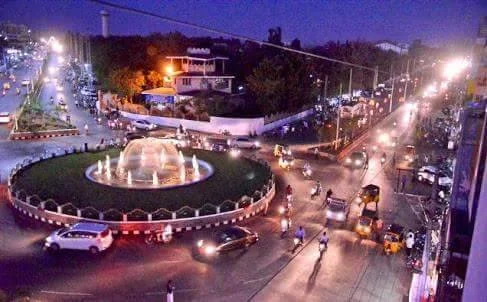The city of Khammam was part of the greater Warangal district until October 1, 1953. Five taluks of Warangal district, namely Khammam, Madhira, Yellandu, Burgampadu and Palwancha (now Kothagudem), were cut and a new district with Khammam as district headquarters was formed. The city is a trade and commercial center. A railway connects it with Warangal and with Vijayawada in Andhra Pradesh to the southeast. Rice, jowar (grain sorghum), maize (maize) and legumes are grown in the area and coal, shells, iron ore and talc are mined in the area. Pop. 159,544 (2001); (2011) 184,210. The district covers an area of 16,029 square kilometers with a population density of 174 persons per square kilometer. There are 1242 villages in the Khammam district, of which 1114 are inhabited villages and the remaining uninhabited villages.
According to the 2011 census, the total population of the district stands at 27,97,370. It accounts for 3.3 percent of the states total population. The districts male population is 13,90,988 making up 49.72% of the district and 3.2 percent of the male state population. Likewise, the districts female population is 14,06,382 and this makes up 50.28% of the district and 3.3 percent of the female state population.
According to the last 2011 census, the rural population of the district is 21,41,459 which makes up 80.19% of the district population and 3.73% of the total rural population of the state. Likewise, divided among 9 cities, the districts urban population is 6,55,911, representing 19.81% of the district population to 2.46% of the states urban population. According to the 2011 census, the districts planned caste population is 4,62,896, which is 16.54% of the district population and 3.46% of the state-planned caste population. Likewise, the districts Scheduled Tribe population is 7,65,565, which accounts for 26.47% of the district on 13.59% of the state-planned tribe population. The decennial population growth in the district from the 2001 census to the 2011 census is 16.39 percent. The population density of the district according to the 2011 census is 174 persons per square kilometer, against 277 persons per square kilometer for the state. The literacy rate of the district is 65.46%, against 60.47% of the state literacy rate. The districts sex ratio is 1011 females per 1000 males, against 978 for the state. The labor force according to the 2011 census is 14,10,062, accounting for 50.41% of the district population at 3.57% of the employed state population.

